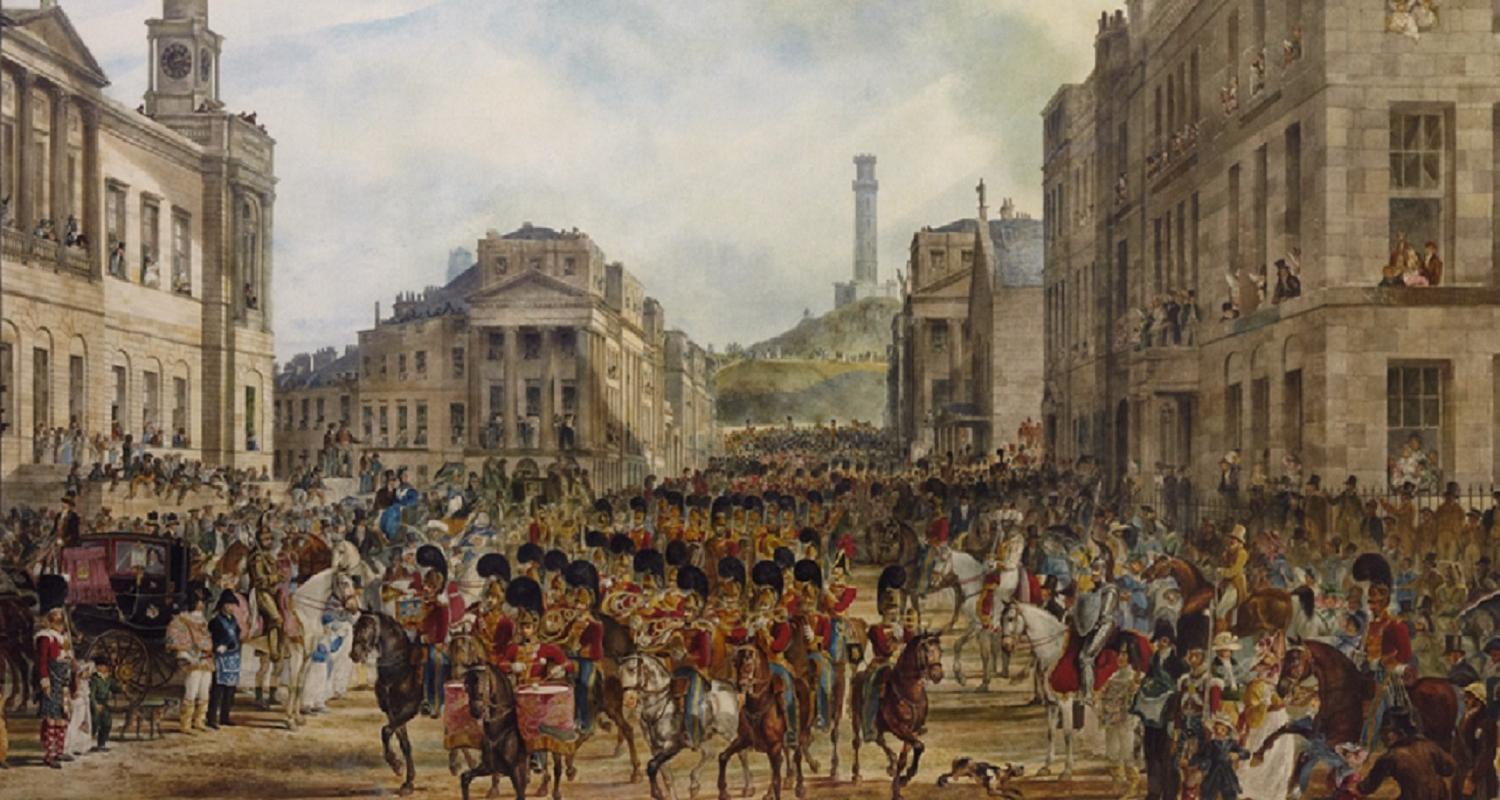August 2022 marks the 200th anniversary of the Royal Visit of King George IV to Edinburgh. The Royal Visit to Edinburgh was the first by a British monarch since the parliamentary Union of 1707. Orchestrated by Sir Walter Scott, the Visit used public ceremonies, dress, objects and pamphlets to celebrate George IV and show the people of Scotland that he was the legitimate heir to Scotland’s national past. Highland dress was encouraged, the cityscape was altered to look its best, and stands for spectators lined the streets to allow everyone a glimpse of their monarch. Museums & Galleries Edinburgh have a significant collection of objects relating to the Visit, from a fine tartan outfit worn by an official guest down to the rough metal holders used by the city's inhabitants for candles lining the Royal Mile. One item from the visit however has remained hidden for years, unknown by anyone. In this blog, Auld Reekie Retold project manager Nico Tyack looks at how a tiny but unique rosette was forgotten about, and how it was rediscovered.
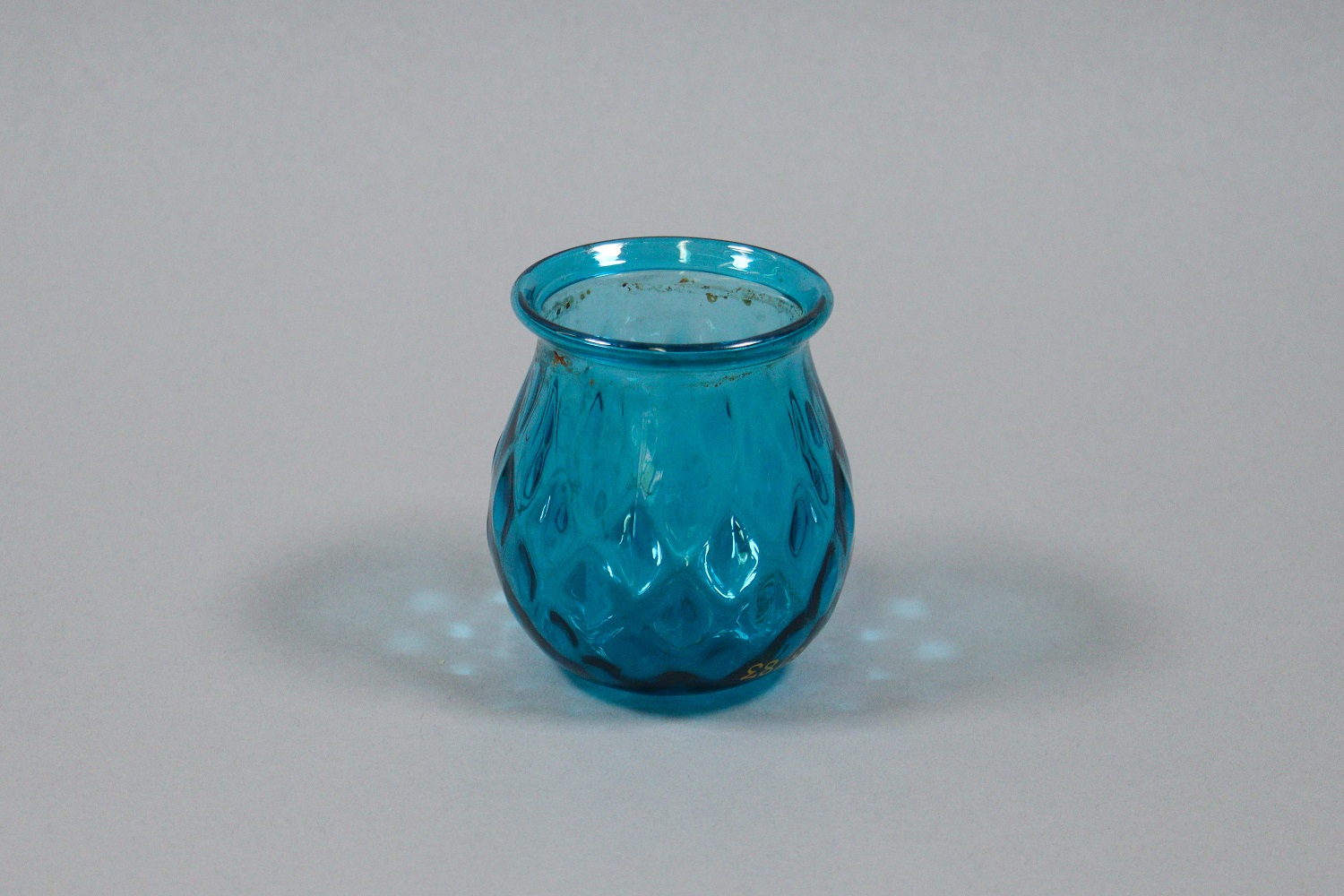
The various items relating to the Royal Visit are not from one single collection, but have been collected through gifts or purchases over decades. The curators at the Museums and Galleries have a good collective expertise about these items which sit within the wider collection areas of social history, applied and decorative art, and fine art. Many are on display at the Museum of Edinburgh, and to mark the occasion of the anniversary, a painting from the City Art Centre collection showing the arrival of the King at Leith harbour has been put on display here too. The Auld Reekie Retold team had a chance to catch up with the items on display at a recent Collections Live in-gallery event where they were all photographed and checked. The Royal Visit collection is so well recognised that some items were lent to the National Museum of Scotland for their "Wild and Majestic" exhibition in 2018. Some feature in an online exhibition marking the visit on the City of Edinburgh council Libraries' "Our Town Stories" resource. The team felt that this collection was in good order; well documented, digitised and much of it "out there" for people to enjoy. Or so they thought.....
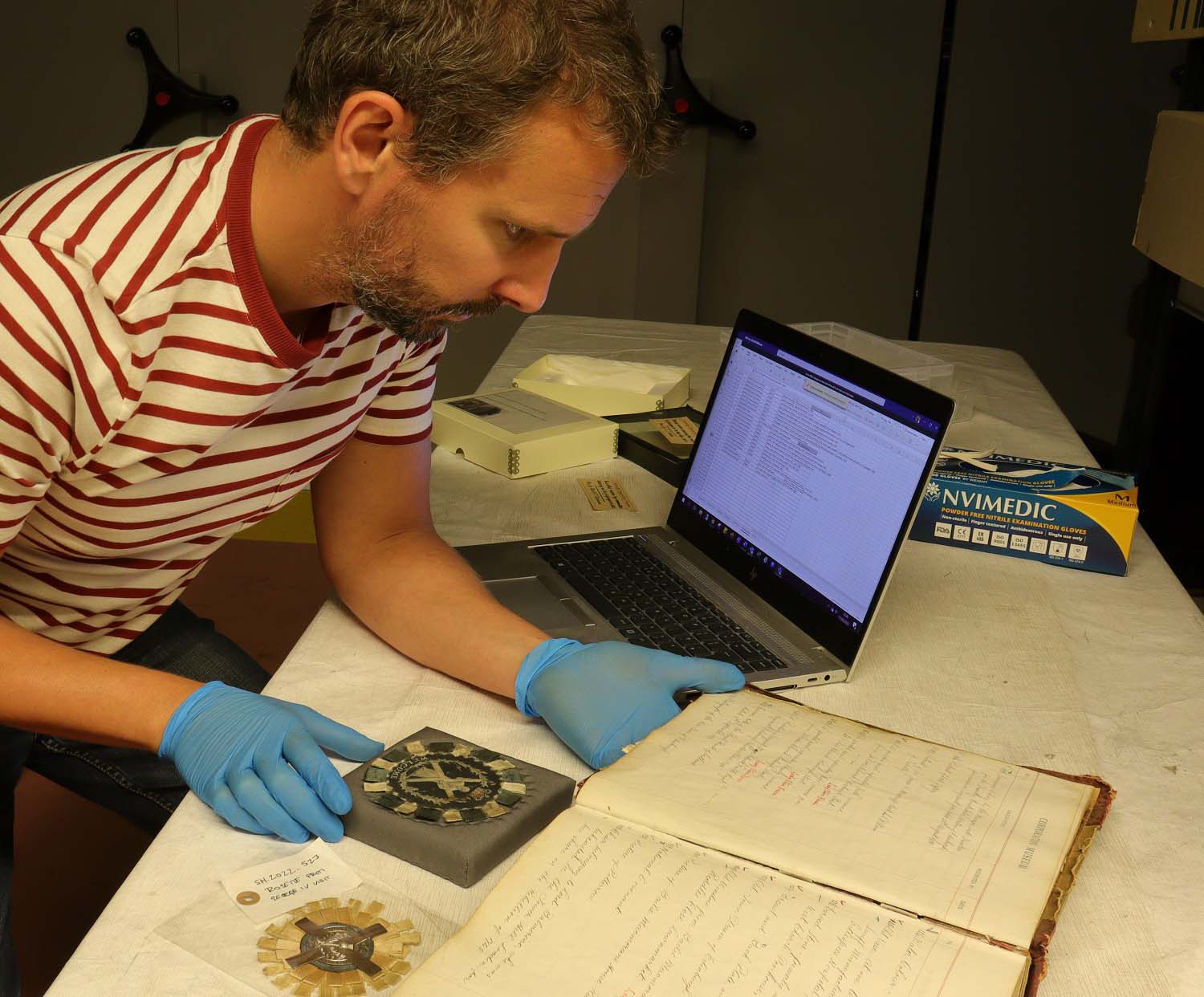
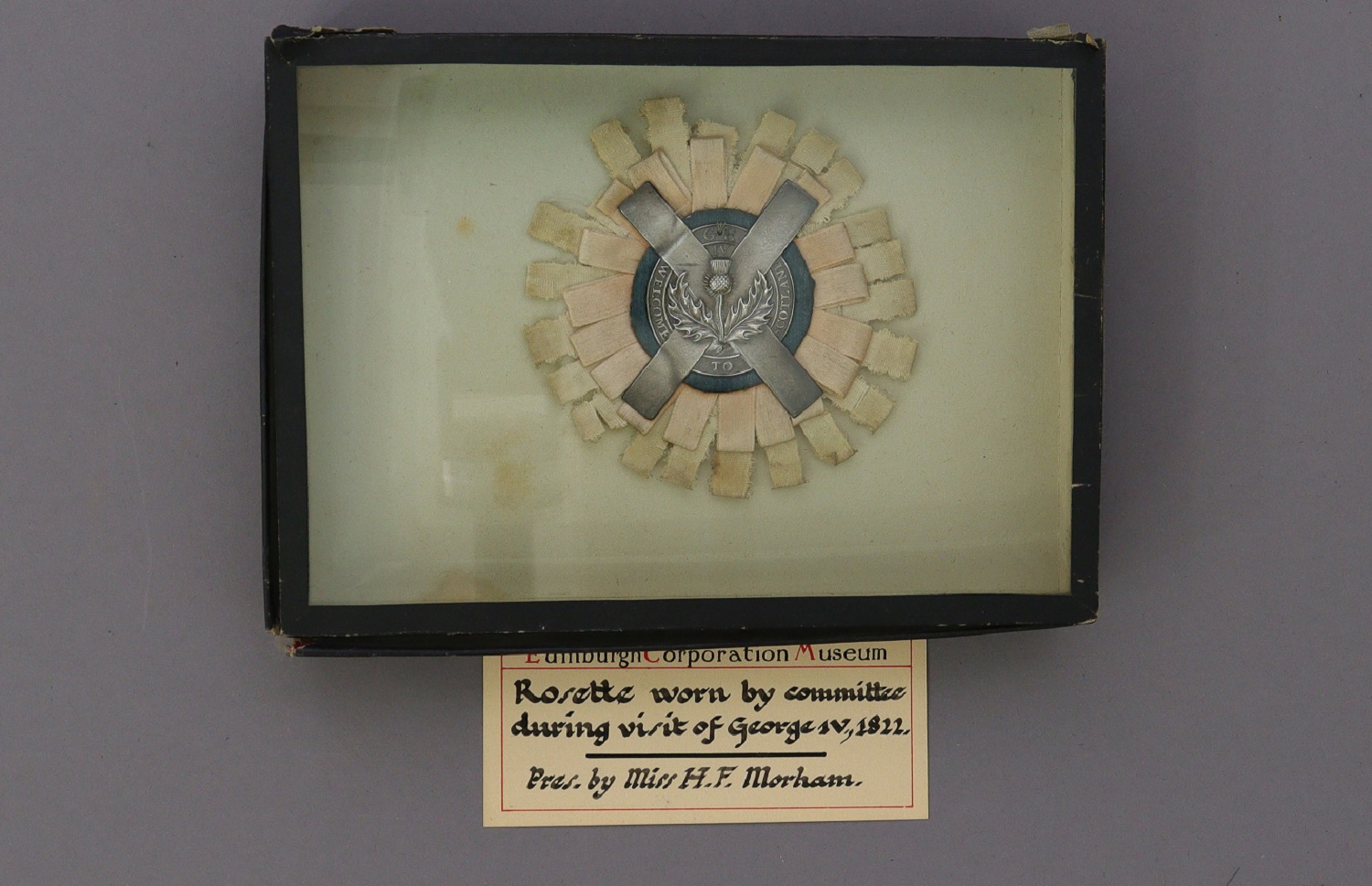
Recently, curator of applied art Helen Edwards was sorting through some old boxes and files at the Museum of Edinburgh as part of the Auld Reekie Retold project. She found two small wooden boxes with glass lids. One box was empty, but the other contained a delicate silk rosette with a silver saltire and thistle and the text “Welcome to Scotland”. Helen saw the link with the royal visit, but some museum detective work was needed to find out more about these items, involving a trawl through decades of documents, inventories, lists, and letters.
Both boxes contained small paper labels with a handwritten caption and the printed heading "Edinburgh Corporation Museum". This was the Council's very first museum, based at the City Chambers on the High Street, You can read more about this early museum on this Auld Reekie Retold blog. Both labels were for rosettes worn during the Royal Visit; one stated the rosette missing from the box had been donated by a L. J. Butti, and the second rosette in the box was donated by a Miss Moreham.
The labels were both written in the same style, and curators knew they dated from some time in the very late 1800s or early 1900s. Most museums keep a running list of all items in their collections called the Accessions Register. These books are the bedrock of any collection. They are as important as the Register of Births, Deaths and Marriages is for people. Anything coming in is listed in these books, with information about how they came to the museum; were they donations or bought? Who from? When? Why? A quick search on the Register and its modern day equivalent, the computerised database quickly allowed curators to match the label from the Butti rosette to a known rosette in the store. The second rosette from Miss Moreham was a little trickier.
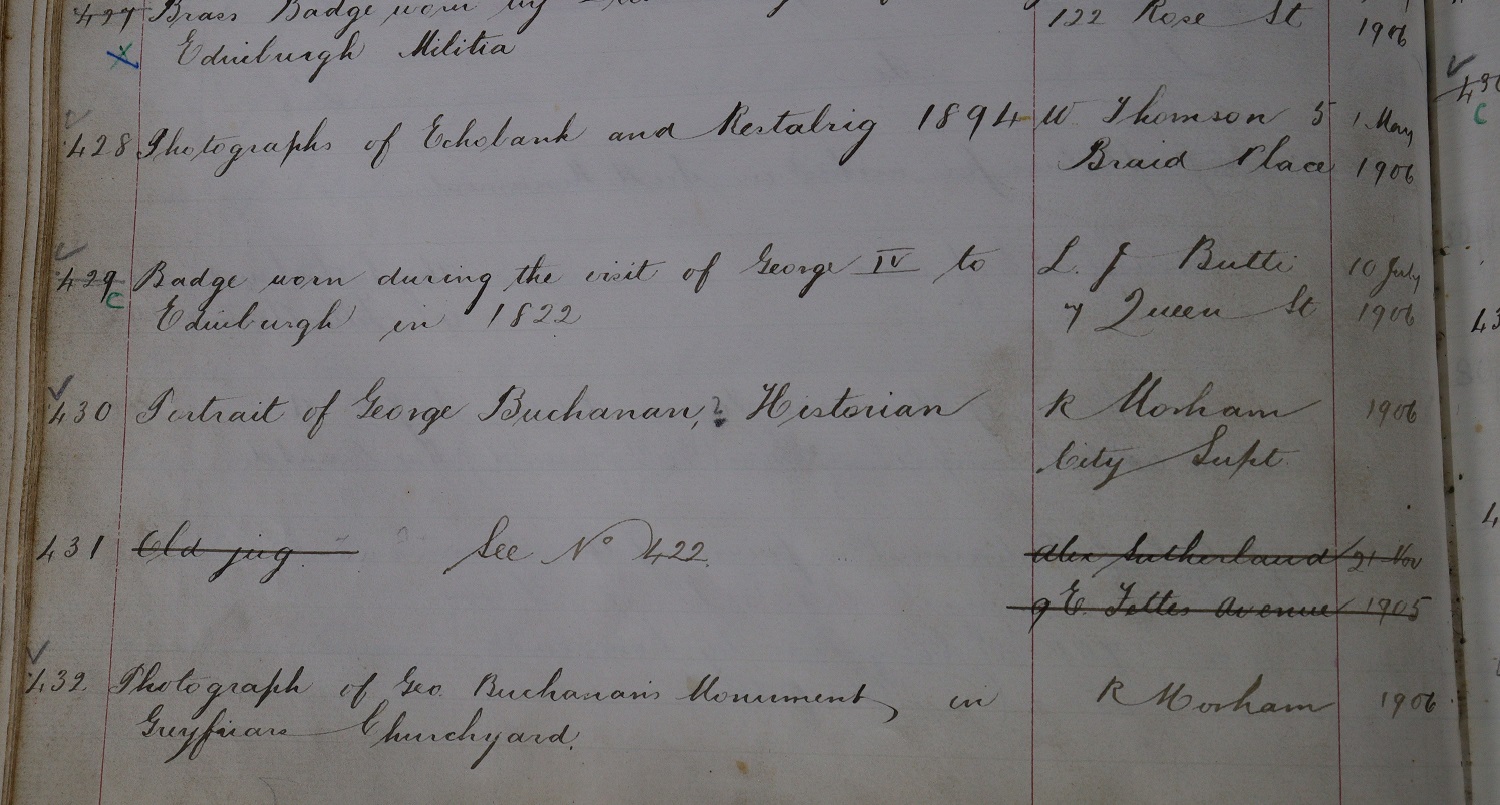
A search for the donor's name found nothing, and there were no other objects listed in the register which fitted the description of this distinctive rosette. Curators concluded that the rosette must have gone on display at the Corporation Museum but was never formally listed. Without a record in the Register, the rosette simply couldn't be tracked and became lost and unknown. Have you ever found a wallet in the street? Imagine there are no cards there with the owner's name. What can you do? It is impossible to trace it back to anybody, just as it was impossible for this rosette to be looked after properly.
But now that the rosette has been found again, it has been recorded, entered in the Register and the database with all the information the curators know about it. Crucially, there is now a way to keep track of it as it embarks on its life as a museum item, moving from store to display, maybe even out on loan to another museum. It has been given a new life.
Since 2019, the Auld Reekie Retold project has found thousands of items from the museum’s earliest days with little or no listed information. They weren’t ‘lost’ exactly – in the language we use today, they were ‘location unverified’ – hiding somewhere in storage, awaiting rediscovery. The team has been working tirelessly to uncover these objects and match them back up with their records. Adding the records to our database means these objects won’t be able to hide again! Meanwhile, curators are researching these rediscovered objects to improve the records and start conversations with the people of Edinburgh about what these items can tell us about the city and its history.
